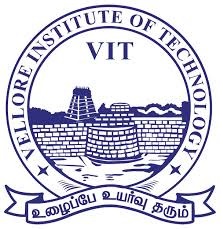
| Institute | Vellore Institute of Technology |
| Exam | VIT Engineering Entrance Exam [VITEEE] 2021 |
| Download | VITEEE Syllabus 2021 |
| Document Type | |
| Official Website | https://viteee.vit.ac.in/ |
VITEEE Entrance Exam
Vellore Institute of Technology conducts VIT Engineering Entrance Exam [VITEEE] for B.Tech Admission
Also Read : VIT Vellore VITEEE Entrance Exam Application 2021
Download VITEEE 2021 Syllabus
| Subject | Syllabus |
| Physics | Download |
| Chemistry | Download |
| Maths | Download |
| Biology | Download |
| English | Download |
VITEEE 2021 Physics Syllabus
1. Laws of Motion & Work, Energy and Power
Law of conservation of linear momentum and its applications. Static and kinetic friction – laws of friction – rolling friction – lubrication. Work done by a constant force and a variable force; kinetic energy – work-energy theorem – power. Conservative forces: conservation of mechanical energy (kinetic and potential energies) – non-conservative forces: motion in a vertical circle – elastic and inelastic collisions in one and two dimensions.
2. Properties of Matter
Elastic behaviour – Stress-strain relationship – Hooke’s law – Young’s modulus – bulk modulus – shear modulus of rigidity – Poisson’s ratio – elastic energy. Viscosity – Stokes’ law – terminal velocity – streamline and turbulent flow – critical velocity. Bernoulli’s theorem and its applications. Heat – temperature – thermal expansion: thermal expansion of solids – specific heat capacity: Cp, Cv – latent heat capacity. Qualitative ideas of Blackbody radiation: Wein’s displacement Law – Stefan’s law.
3. Electrostatics
Charges and their conservation; Coulomb’s law-forces between two point electric charges – Forces between multiple electric charges-superposition principle. Electric field – electric field due to a point charge, electric field lines; electric dipole, electric field intensity due to a dipole – behaviour of a dipole in a uniform electric field. Electric potential – potential difference-electric potential due to a point charge and dipoleequipotential surfaces – electrical potential energy of a system of two point charges. Electric flux-Gauss’s theorem and its applications. Electrostatic induction-capacitor and capacitance – dielectric and electric polarisation – parallel plate capacitor with and without dielectric medium – applications of capacitor – energy stored in a capacitor – Capacitors in series and in parallel – action of points – Van de Graaff generator.
VITEEE 2021 Chemistry Syllabus
1. Atomic Structure:
Bohr’s atomic model-Sommerfeld’s extension of atomic structure; Electronic configuration and Quantum numbers; Shapes of s,p,d,f orbitals – Pauli’s exclusion principle – Hund’s Rule of maximum multiplicity- Aufbau principle. Emission and absorption spectra, line and band spectra; Hydrogen spectrum – Lyman, Balmer, Paschen, Brackett and Pfund series; deBroglie’s theory; Heisenberg’s uncertainty principle – wave nature of electron – Schrodinger wave equation (No derivation). Eigen values and eigen functions. Hybridization of atomic orbitals involving s,p and d orbitals.
2. p,d and f – Block Elements:
p-block elements – Phosphorous compounds; PCl3, PCl5 – Oxides. Hydrogen halides, Inter halogen compounds. Xenon fluoride compounds. General Characteristics of d – block elements – Electronic Configuration – Oxidation states of first row transition elements and their colours. Occurrence and principles of extraction: Copper, Silver, Gold and Zinc. Preparation and properties of CuSO4, AgNO3 and K2Cr2O7. Lanthanides – Introduction, electronic configuration, general characteristics, oxidation state – lanthanide contraction, uses, brief comparison of Lanthanides and Actinides.
3. Coordination Chemistry and Solid State Chemistry:
Introduction – Terminology in coordination chemistry – IUPAC nomenclature of mononuclear coordination compounds. Isomerism, Geometrical isomerism in 4-coordinate, 6-coordinate complexes. Theories on coordination compounds – Werner’s theory (brief), Valence Bond theory. Uses of coordination compounds. Bioinorganic compounds (Haemoglobin and chlorophyll). Lattice – unit cell, systems, types of crystals, packing in solids; Ionic crystals – Imperfections in solids – point defects. X-Ray diffraction – Electrical Property, Amorphous solids (elementary ideas only).
VITEEE 2021 Mathematics Syllabus
1. Matrices and their Applications:
Adjoint, inverse – properties, computation of inverses, solution of system of linear equations by matrix inversion method. Rank of a matrix – elementary transformation on a matrix, consistency of a system of linear equations, Cramer’s rule, non-homogeneous equations, homogeneous linear system and rank method. Solution of linear programming problems (LPP) in two variables.
2. Trigonometry and Complex Numbers:
Definition, range, domain, principal value branch, graphs of inverse trigonometric functions and their elementary properties. Complex number system – conjugate, properties, ordered pair representation. Modulus – properties, geometrical representation, polar form, principal value, conjugate, sum, difference, product, quotient, vector interpretation, solutions of polynomial equations, De Moivre’s theorem and its applications. Roots of a complex number – nth roots, cube roots, fourth roots.
VITEEE 2021 Biology Syllabus
1. Taxonomy:
Need for classification; three domains of life. Linnaean, Whittaker, Bentham and Hooker systems of classification. Salient features and classification of non-chordates up to phyla levels and chordates up to class levels. Morphology and anatomy of flowering plants. Structural organization in insects(cockroach)
2. Cell and Molecular Biology:
Cell theory. Prokaryotic cell and it’s ultrastructure. Eukaryotic cell- cell wall, cell membrane, cytoskeleton, nucleus, chloroplast, mitochondria, endoplasmic reticulum, Golgi bodies, ribosomes, lysosomes, vacuoles and centrosomes. Cell cycle and division – amitosis, mitosis and meiosis. Search for genetic material; structure of DNA and RNA; replication, transcription, genetic code, translation, splicing, gene expression and regulation (lac operon) and DNA repair.
3. Reproduction:
Asexual reproduction – binary fission, sporulation, budding, gemmule formation and fragmentation. Vegetative propagation in plants, sexual reproduction in flowering plants and structure of flowers. Pollination, fertilization, development of seeds and fruits, seed dispersal, apomixis, parthenocarpy and poly-embryony. Human reproductive system. Gametogenesis, menstrual cycle, fertilization, implantation, embryo development upto blastocyst formation, pregnancy, parturition and lactation. Assisted reproductive technologies
VITEEE 2021 English Aptitude Syllabus
1. Data Interpretation
2. Data Sufficiency
3. Syllogism
4. Number series, Coding and Decoding
5. Clocks, Calendars and Directions
Have a question? Please feel free to reach out by leaving a comment below

![NISER National Entrance Screening Test [NEST] 2021 Syllabus NEST-Logo](https://www.recruitmentzones.in/wp-content/uploads/2021/07/NEST-Logo-150x150.jpg)
![NICE Foundation National Scholarship Exam [NSE] 2021 Syllabus Nice-Foundation-Logo](https://www.recruitmentzones.in/wp-content/uploads/2021/09/Nice-Foundation-Logo-150x145.jpg)
![FIITJEE Talent Reward Exam [FTRE] 2021 Syllabus Syllabi FIITJEE](https://www.recruitmentzones.in/wp-content/uploads/2021/03/FIITJEE-Logo-150x105.png)
![Indian School Talent Search [ISTSE] Olympiad Exam 2021-22 Syllabus ISTSE-Logo](https://www.recruitmentzones.in/wp-content/uploads/2021/08/ISTSE-Logo-150x150.jpg)